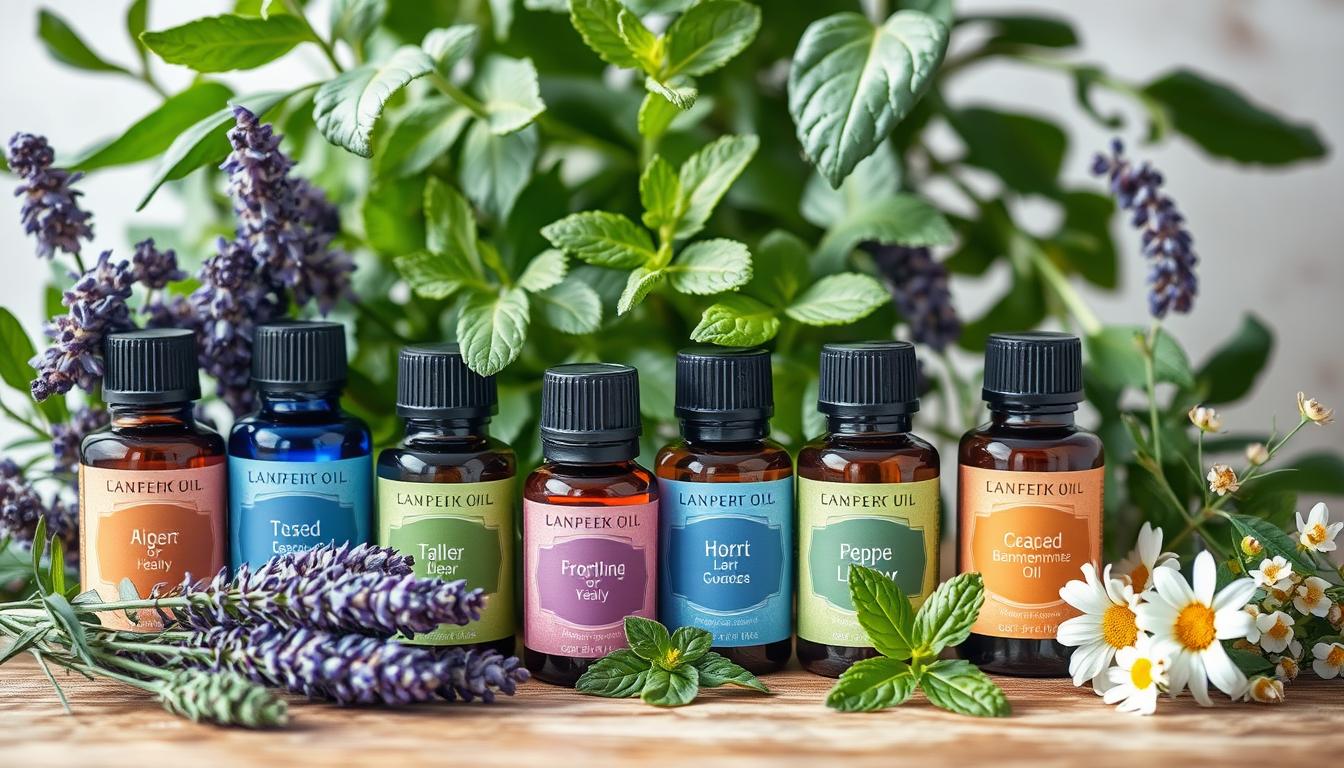
Are Aromatherapy Oils Safe for Dogs? A Guide for Pet Owners
“The greatness of a nation and its moral progress can be judged by the way its animals are treated.” – Mahatma Gandhi
Essential oils and aromatherapy are becoming more popular. Pet owners might want to use them for their dogs. But, it’s not always safe for our furry friends. Some oils are okay, but others can be very dangerous.
Key Takeaways
- Essential oils can be beneficial for dogs, but their use requires expert guidance and caution.
- Cats are more sensitive to essential oils than dogs, and their use around felines is generally not recommended.
- Certain essential oils, such as lavender, chamomile, and rosemary, are considered safer for dogs, while others, like citrus and tea tree, should be avoided.
- Topical application of essential oils on dogs can cause skin irritation, and ingestion or absorption can lead to serious health issues.
- Consulting a veterinarian is crucial before using any essential oils around your pet to ensure their safety and wellbeing.
Understanding Essential Oils and Their Impact on Dogs
Essential oils are very strong plant extracts. They can quickly get into a dog’s body through their skin or when they breathe them in. Dogs smell things much better than people do, so they might be more affected by these smells. The liver breaks down these oils, which can be a problem for young dogs, older dogs, or those with liver issues.
What Are Essential Oils?
Essential oils come from plants like flowers, leaves, stems, and roots. They are used in things like aromatherapy, skincare, and cleaning products because of their strong smells and possible health benefits. But, because they are so strong, they can be dangerous for dogs if not used carefully.
How Dogs React to Aromatherapy
Some dogs might have breathing problems when they smell warmed essential oils. Others could get skin rashes or stomach issues if they touch or eat the oils. The strong smells can also upset dogs, causing them to act differently or feel stressed.
The Science Behind Pet Sensitivity
Dogs smell things much better than humans do. Their bodies also process essential oils differently. This can be hard on a dog’s liver, especially for young, old, or dogs with liver problems. If a dog gets too much essential oil, it’s important to get a vet’s help right away to avoid harm.
| Essential Oil | Potential Toxicity |
|---|---|
| Cinnamon Oil | Can cause skin irritation, liver damage, and central nervous system depression |
| Citrus Oils | May cause photosensitivity and skin irritation |
| Tea Tree Oil | Can affect the nervous system and cause skin irritation |
| Pennyroyal Oil | Highly toxic, can cause liver damage and central nervous system depression |
Pet owners need to be careful with holistic wellness products, fragrance oils, essential oil diffusers, herbal supplements, and other botanical ingredients around their dogs. Always talk to a vet before using any new products to keep your dog safe and healthy.
“Only a couple of licks or a small amount of essential oils or liquid potpourri on the skin could be harmful to a dog.”
Safe and Toxic Essential Oils for Dogs
It’s important to be careful with essential oils and dogs. Some natural remedies are safe, but many can be harmful. Knowing which oils are safe and which are toxic is crucial for pet owners.
Lavender, chamomile, ginger, and frankincense are generally safe for dogs. They can help calm dogs and treat skin issues. But, many essential oils are toxic to dogs. This includes oils that can be ingested, applied to the skin, or inhaled.
- Toxic essential oils for dogs include cinnamon, clove, citrus, pennyroyal, peppermint, pine, tea tree, wintergreen, and ylang ylang.
- Symptoms of essential oil poisoning in dogs can include drooling, shaking, unsteadiness, difficulty breathing, vomiting, and seizures.
- In severe cases, essential oil poisoning can lead to liver failure or even death.
Always talk to a vet before using essential oils around your dog. They can help with safe use and dosage. Keeping our dogs safe from harmful essential oils is a big responsibility for pet owners.
| Safe Essential Oils for Dogs | Toxic Essential Oils for Dogs |
|---|---|
| Lavender | Cinnamon |
| Chamomile | Clove |
| Ginger | Citrus |
| Frankincense | Pennyroyal |
| Peppermint | |
| Pine | |
| Tea Tree | |
| Wintergreen | |
| Ylang Ylang |
When it comes to your dog’s health, it’s better to be safe than sorry. Always check with your vet before using essential oils on your dog.
“The nose knows best when it comes to our canine companions. As pet owners, we must be vigilant about the potential risks of essential oils to ensure our dogs’ wellbeing.”
Best Practices for Using Essential Oils Around Pets
Proper Dilution and Application Methods
When using essential oils around your pets, make sure to dilute them correctly. Experts suggest using four to five drops of essential oils per 10 ml of carrier oil. This helps avoid skin irritation or other bad reactions.
Never put undiluted essential oils on your dog’s skin or fur. Their sensitive noses and skin can cause problems like drooling, squinting, and vomiting.
Safe Diffuser Usage Guidelines
Essential oil diffusers can make your home feel calm and welcoming. But, it’s important to think about your pets’ safety. Make sure the room is well-ventilated.
Let your pets leave the area if the scent is too strong. Birds and small animals like rodents are very sensitive to essential oils. It’s best to keep diffusers away from them.
Storage and Handling Tips
Keeping essential oils safe is crucial for your pets. Store them in secure, pet-proof containers. Keep them out of reach of curious pets.
When cleaning surfaces treated with essential oils, remove all residue before letting pets near. If you think your pet has been exposed, call your vet right away. Signs of toxicity include vomiting, trouble breathing, and feeling very tired.


